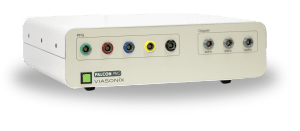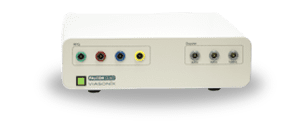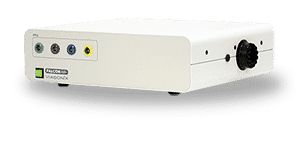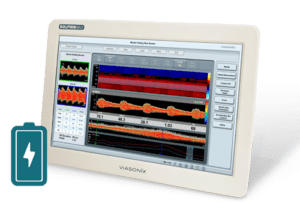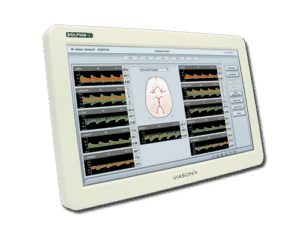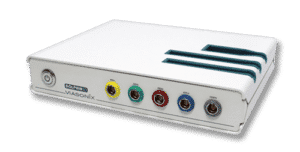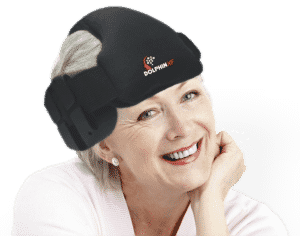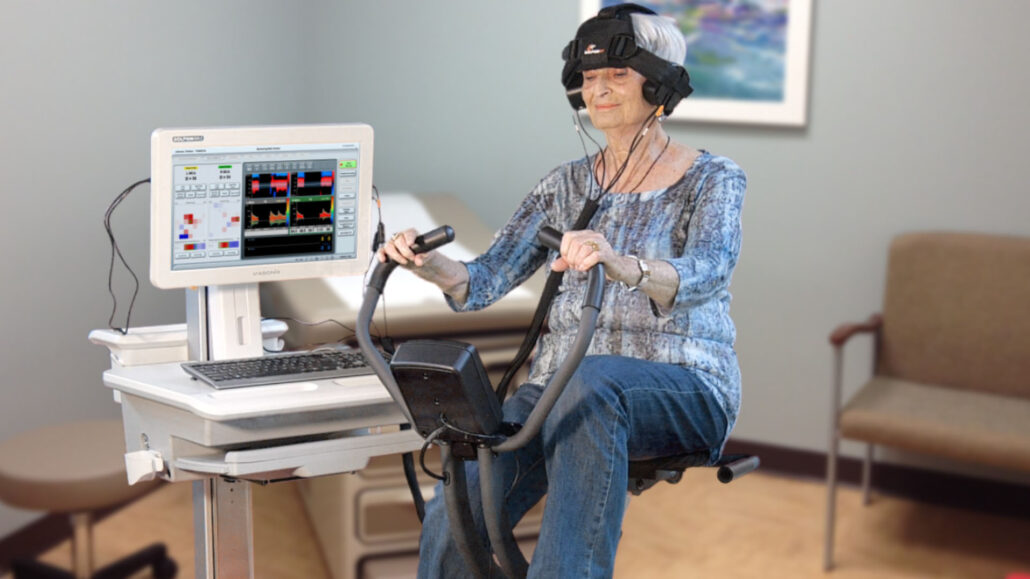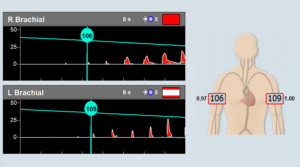Robotic TCD measurements are a giant leap forward in traditional Transcranial Doppler diagnosis and monitoring.
About Transcranial Doppler
Transcranial Doppler, or TCD in short, is a non-invasive method of measuring blood flow velocities, primarily in the arteries of the brain, using ultrasound Doppler technology. Some even call TCD as the “stethoscope of the brain”.
TCD equipment is relatively inexpensive and provides valuable clinical information. Normally, a TCD examination requires a Doppler probe, typically with a frequency of 2MHz or 1.6MHz, that is aimed at specific cranial locations towards the target cerebral blood vessels.
Thanks to a relatively thin bone location in the head, the TCD beam can penetrate the brain. This region is called the “temporal window,” and it’s located between the ear and the eye on both sides of the head.
There are many clinical conditions that can be diagnosed with TCD, many of them related to the risks of stroke and cerebral vasospasm detection and monitoring.
What is a Traditional TCD Measurement?
Traditional TCD devices are non-robotic devices, which means that the entire process of locating cerebral blood vessels with the handheld probe – is done manually.
It’s even worse with long-term monitoring, where traditional TCD devices use a manual headset to hold 2 TCD probes in the regions of the temporal window.
The manual method can be challenging and sometimes even frustrating. The whole process of fixing it and manually aiming the probe at the right location requires a professional and experienced TCD physician or technician who is familiar with the measurement process and can identify the measured blood vessels.
What is Robotic TCD?
Robotic TCD measurements have evolved recently and provide significant progress in TCD technology. The purpose of this state-of-the-art method:
- To try and expedite the identification of vessels for monitoring purposes;
- Provide better stabilization of the measured signals;
- Reduce the high dependability on professional TCD sonographers;
- Expand the use of Transcranial Doppler measurements beyond the traditional Neurology and Neurosurgery settings.
It is important to note that robotic TCD equipment only complements traditional TCD systems and is not intended to replace traditional TCD use at this stage.
A TCD robot generally means that the Doppler TCD probes are automatically and mechanically controlled. It searches through the temporal window for the optimal blood flow velocity measurement.
Once the robot identifies a waveform, the probes mechanically lock in place. If the signal is lost for any reason, then unlike traditional TCD, where the examiner needs to search and find the vessels again manually, with robotic TCD, the system can automatically search and relocate the blood flow velocities.
Review of Robotic TCD Equipment
Transcranial Doppler sonography has been a standard equipment for monitoring and diagnosing blood flow pathologies in the brain since the 1980s. The introduction of Robotic TCD monitoring is a giant leap forward and holds the promise of quick and simple Transcranial Doppler monitoring as well as extending the use of Transcranial Doppler beyond current traditional clinical applications.
To date, only 4 TCD companies spearhead the robotic development front and can offer commercial Transcranial Robotic systems:
- Viasonix™, with its Dolphin/XF TCD robot. This highly advanced bi-lateral robotic TCD machine allows a very fast search for blood vessels. It can identify several different blood vessels at multiple depths through a single scan. The Dolphin/XF has a unique disposable headset that is very comfortable to use. This perfect invention is easy to set up and protects the patient from infection between uses.
- NovaSignal™ (NeuraSignal™) with its NovaGuide™ TCD robot. The patient-robot interaction of the NovaGuide™ robot is different than other TCD robotics. In the NovaGuide™ robot, the probe and mechanical parts are not assembled on the patient’s head with a dedicated headset. Since the probes are not fixed to the patient head with a headset, the patient head should not move relative to the probes.
- Atys™ with its TCD-X™ robot. Atys™ is a company based in France that originally developed a robotic TCD holter. The initial robot was unilateral, with the robotic assembly situated on a holder and connected to a recording module without a Doppler display. It was based on the concept of eyeglasses and carried by the patient.
- Delica™ TCD robot. Delica™ is a Chinese-based company that developed a robot with a mechanical assembly that is situated on the standard monitoring headgear. This robot is sold in the USA by Multigon Industries™. It is bi-lateral like most Transcranial Doppler robotic systems and has search and track options.
Two other Transcranial Doppler companies currently do not have commercial TCD robotic solutions: DWL™ (a Compumedics™ company) and Rimed™.
Looking forward
While the Transcranial Doppler market has been quite stagnant for many years, the introduction of TCD robotics in recent years provides an exciting opportunity to improve brain care and diagnosis further.
New opportunities open up, whether in more widespread use of TCD in neuro-critical settings or for new applications such as the Bubble Test for cardiovascular patients.
TCD robots are simple to use and found to be effective and useful. Additional developments in this area of robotics can enhance the importance of cerebral transcranial diagnosis even further.
For more information, please leave us a message.

